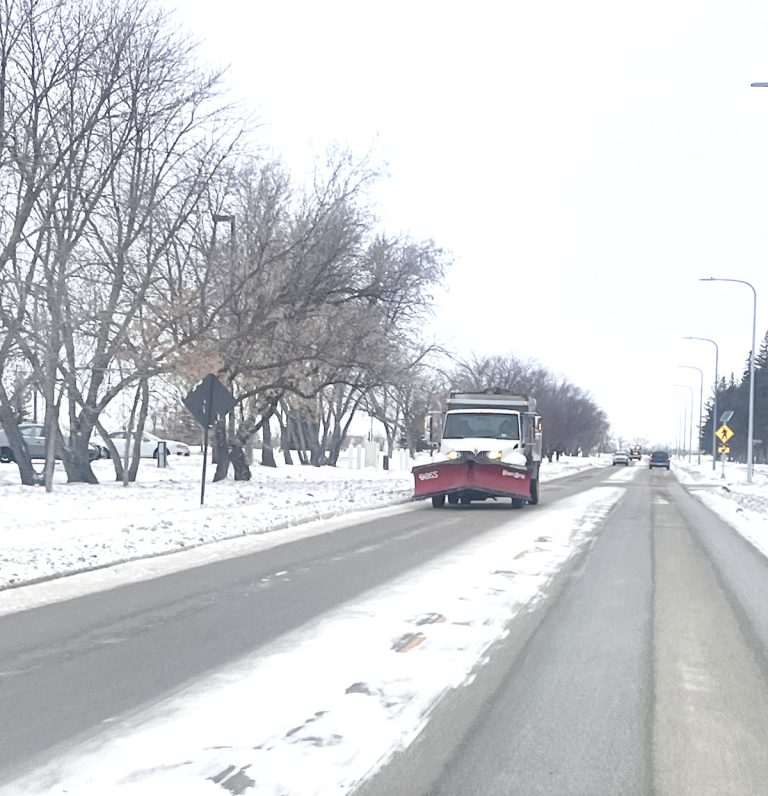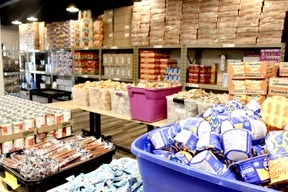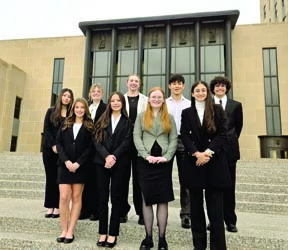The nuclear mission at Minot Air Force Base operates 24/7 and does not stop just because of snow—whether it’s a little or a lot. Snow removal on base is a carefully coordinated effort divided into two operations: the main side of the base, managed by the 5th Civil Engineer Squadron (CES), and the housing side, overseen by Minot AFB Housing Office and contracted out to Davey Tree.
According to Master Sergeant Ryan Powell, Pavement and Equipment Section Chief responsible for overseeing snow removal on the operational side of Minot AFB, many factors determine snow-clearing priorities during winter. The 5th CES has 70 members assigned to the snow removal team, operating in three shifts to maintain a continuous 24/7 operation staffed by both active-duty personnel and civilian employees.
Main Base Snow Removal Mission:
The snow removal team is responsible for clearing not only the roads on Minot AFB but also the access routes to all Missile Alert Facilities in the missile field, which are located between 35 and 76 miles away, where a significant portion of the base’s operations take place. The highest priority is always the flight line, taxiways, and alert routes to ensure the mission can continue. “Next, the team clears the main roads and parking lots for Category 1 personnel, who are essential to keeping the mission running, including Command Post, Security Forces Defenders, and Fire Department staff and typically followed by supporting agency parking lots such as Base Exchange, Commissary, and Education Center. If heavy snowfall or high winds persist, crews may need to continuously clear and return to the top priority areas, such as the flight line, taxiways, alert routes, and main roads.
To manage road conditions, the 5th CES uses a mixture of salt, sand, and liquid deicer. However, MSgt Powell emphasized that while liquid deicer can be effective for a few hours, it can also create hazardous conditions as it turns to ice when temperatures drop. ‘Safety is a top priority,’ he explained. ‘We don’t want to use something that works temporarily but worsens conditions later.’ Salt becomes less effective when temperatures fall below 15°F, while liquid deicers can remain effective down to -25°F—both common temperatures during a Minot winter.
While snowfall can happen any day of the week, snow-clearing priorities may shift depending on the time of day. MSgt Powell explained that if it snows on a weekend, the approach is more flexible. “We still prioritize the flight line, taxiways, alert routes, and main roads, but we also focus on key areas like the Base Exchange, Commissary, and gates to allow people to get out and take care of their needs since other facilities may not be operational at that time.”
Minot AFB Housing Snow Removal:
Clearing roads in base housing is also a high priority for the Minot AFB Housing Office. Joshuah Smith, Customer Experience Manager for Minot AFB Housing, emphasized that residents still need to get to work and complete the mission, making snow removal essential. Minot AFB Housing contracts with Davey Tree, which has provided snow removal services for the past three years.
“Priority is set based on mission needs and communication—not only with leadership and our contractor but also with our residents,” Smith explained. In previous years, snow removal in housing had its challenges, but this year, Davey Tree has recruited new talent and brought in upgraded equipment, leading to a smoother operation. Minot AFB Housing manages the largest housing portfolio in the Air Force, with more than 1,500 homes.
According to Smith, Davey Tree operates 24/7, ensuring that housing areas remain accessible. Snow removal priorities start with the main roads, including Sirocco Drive, Peacekeeper Place, and H Street, followed by side roads such as Waverly Way and Dunbee Drive. Once those are cleared, crews focus on sidewalks, and finally, driveways. Similar to the operational side of the base, if continuous snowfall or high winds persist, main roads remain the top priority. In cases of extreme wind where snow drifts are constantly shifting, removal efforts may need to pause until conditions improve.
Davey Tree and Minot AFB Housing also work closely with residents, making reasonable accommodations when needed, such as re-plowing specific areas that accumulate snow due to wind. “Many residents have expressed satisfaction with the snow removal team this year and have noticed significant improvements,” Smith shared.
Similar to the operational side, salt and sand are used on the roads to improve traction. However, Smith explained that chemical deicers are more difficult to use in housing areas due to concerns about residents’ primarily children inhaling or being exposed to these substances. He credited much of this year’s improvements in snow removal to feedback received from the Tenant Satisfaction Survey, which helped guide changes in the process.
By maintaining a well-organized, round-the-clock snow removal operation, Minot AFB ensures that its critical mission continues despite the harsh winter weather. The dedication and coordination between the 5th CES, Minot AFB Housing, and their contractors play a crucial role in keeping the base operational and accessible.
With ongoing improvements in both operational and housing snow removal efforts, Minot AFB remains committed to safety, efficiency, and mission readiness. These efforts not only support the base’s essential operations but also enhance the quality of life for residents, ensuring they can navigate winter with confidence.














